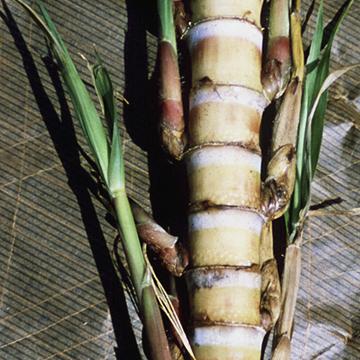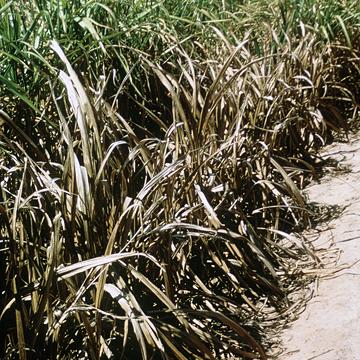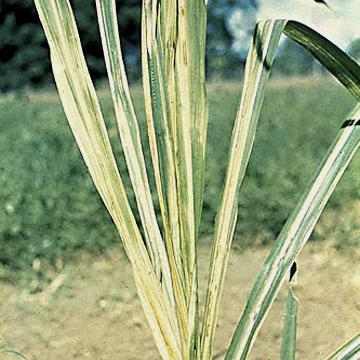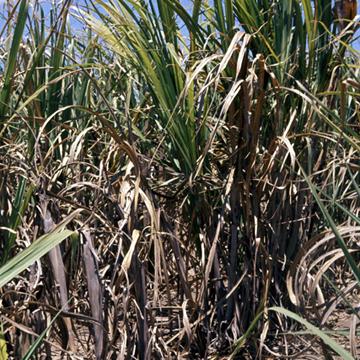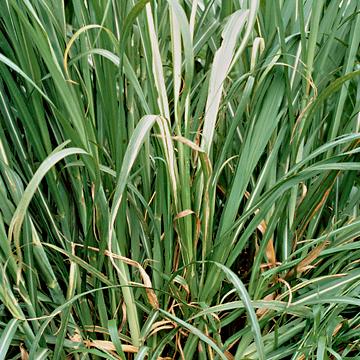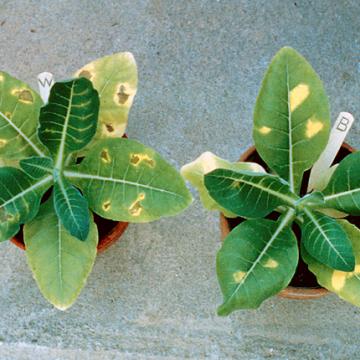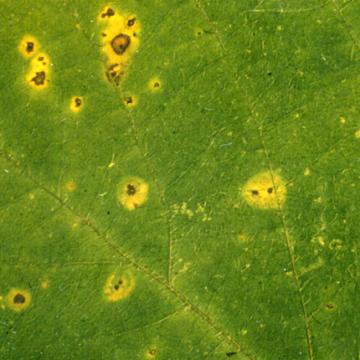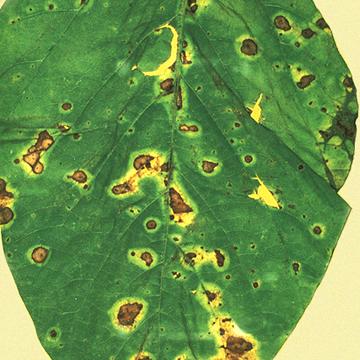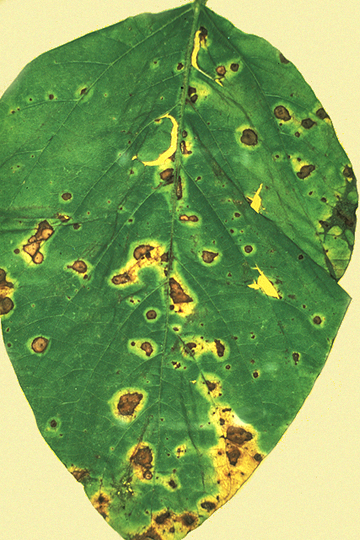DISEASE: Leaf scald
HOST: Sugarcane
Side shoots, some with chlorosis and whitish, "pencil-line" symptoms.
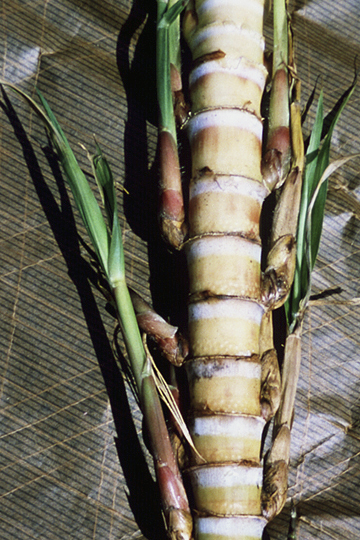
Leaf scald | Sugarcane
DISEASE: Leaf scald
HOST: Sugarcane (Saccharum officinarum)
PATHOGEN: Xanthomonas albilineans
SOURCE: R. Birch
DISEASE: Leaf scald
HOST: Sugarcane
Susceptible variety in foreground and more resistant varieties in background.
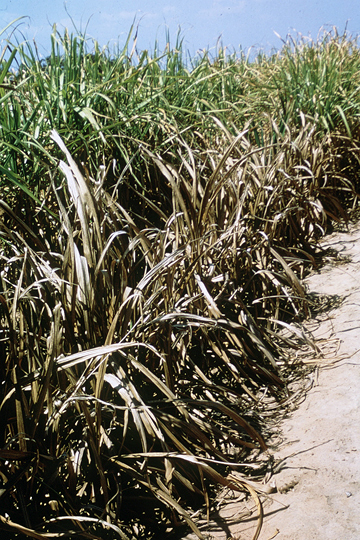
Leaf scald | Sugarcane
DISEASE: Leaf scald
HOST: Sugarcane (Saccharum officinarum)
PATHOGEN: Xanthomonas albilineans
SOURCE: R. Birch
DISEASE: Leaf scald
HOST: Sugarcane
Advanced stage of disease with coalescing white and yellowish stripes.
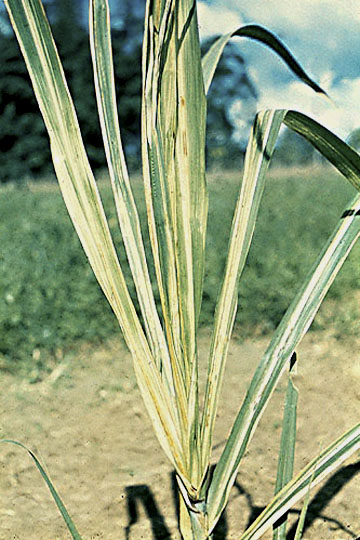
Leaf scald | Sugarcane
DISEASE: Leaf scald
HOST: Sugarcane (Saccharum officinarum)
PATHOGEN: Xanthomonas albilineans
SOURCE: R. Birch
DISEASE: Leaf scald
HOST: Sugarcane
Field view of the advanced stage of disease.
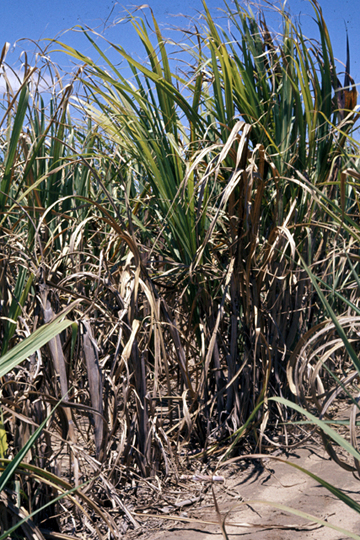
Leaf scald | Sugarcane
DISEASE: Leaf scald
HOST: Sugarcane (Saccharum officinarum)
PATHOGEN: Xanthomonas albilineans
SOURCE: D. Teakle
DISEASE: Leaf scald
HOST: Sugarcane
Acute phase of disease is characterized by wilting and dying plants. Leaves during this stage have very narrow, white lines that may extend the entire length of the leaf or sheath.
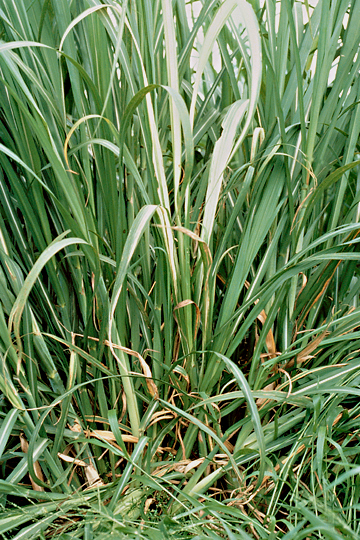
Leaf scald | Sugarcane
DISEASE: Leaf scald
HOST: Sugarcane (Saccharum officinarum)
PATHOGEN: Xanthomonas albilineans
SOURCE: APS
DISEASE: Leaf scald
HOST: Sugarcane
Leaves with narrow, white stripes/streaks, a stage of the disease.

Leaf scald | Sugarcane
DISEASE: Leaf scald
HOST: Sugarcane (Saccharum officinarum)
PATHOGEN: Xanthomonas albilineans
SOURCE: APS
DISEASE: Wildfire (Angular leaf spot)
HOST: Tobacco
Characteristic symptoms are necrotic, brown spots with angular margins surrounded by distinct yellow halos. The halos are caused by the production of tabtoxin.

Wildfire (Angular leaf spot) | Tobacco
DISEASE: Wildfire (Angular leaf spot)
HOST: Tobacco (Nicotiana tabacum)
PATHOGEN: Pseudomonas syringae pv. tabaci
SOURCE: G. Lucas
DISEASE: Wildfire
HOST: Soybean
Close-up of lesions with large, yellow halos.
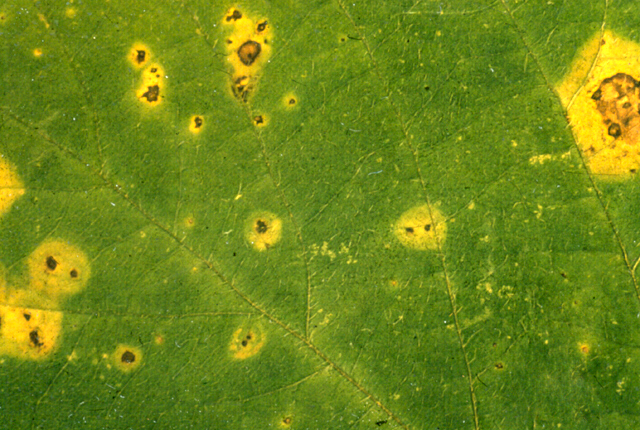
Wildfire | Soybean
DISEASE: Wildfire
HOST: Soybean (Glycine max)
PATHOGEN: Pseudomonas syringae pv. tabaci
SOURCE: J. Forsberg, M. Shurtleff


